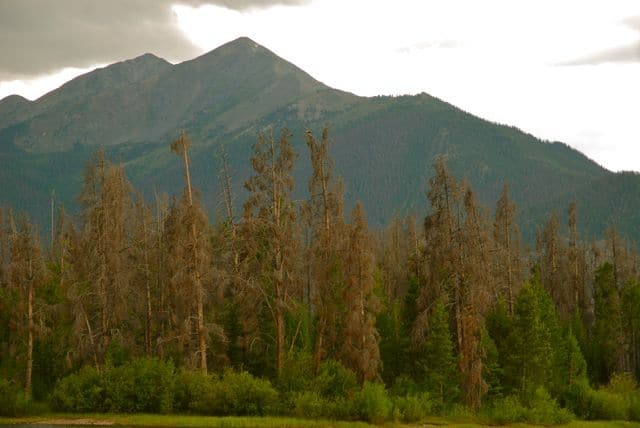I have spent the weekend dealing with leadership issues in one of my volunteer organizations…so have been slow to respond to blog comments. I’m sure I’ll have something thoughtful to say about this experience, when it’s over, if it ever is…

Anyway, here’s a question from Bob Berwyn, editor of Summit County Citizen’s Voice and photographer par excellence. The photo above is his work.
IMHO we ought to be able to explain to a member of the public who is not a planning wonk “what’s goin’ on”.
Here’s the classic Marvin Gaye version of “What’s Goin’ On” for those of you for whom this reference seems unfamiliar.
Almost at the same time that I read the Forest Service press releases about the new draft forest planning rule, and even before I had a chance to click on all the links, I also had a couple of press releases from conservation and wildlife advocacy groups in my inbox, decrying the new rule as less protective of wildlife.
Sometimes, in my haste to “scoop” the local print newspaper, I rush into posting stories, using such press releases, combined with some of my own contextual understanding of the issue, to try and create something interesting for readers. I was tempted to do the same late last week, but decided against it. Instead, I posted a straightforward story about the release, along with the YouTube video (here it is,SF) , and the links straight off the Forest Service planning rule page, along with letting readers know that this is the start of another important public comment period and that there will be a meeting in Lakewood.
I figure there will be plenty of time to follow up and take a closer look at some of the particulars of the plan.
I did have a long conversation/interview with Andy Stahl, someone I’ve learned to trust over the years, knowing that he speaks from the watchdog perspective. I asked him what was different in this rule, and he zoomed in on the same issue – wildlife viability.
What I gathered from the combination of the press releases and the interview is that the new rule requires the Forest Service to carefully consider impacts to species listed as threatened or endangered, and to species of concern, but that it leaves a lot of loopholes (my word, not his) with regard to other species, or “common” species, as was posted here.
According to Andy, the 1982 version had a simple requirement to maintain the viability of all species. The new rule instead, sets a very high threshold … and relieves the Forest Service of any affirmative need to show that protection.
Andy brought the spotted owl into play and said that, ever since the spotted owl decision, the Forest Service has been trying to chip away at the viability provision.
So Friday, I tried to call the national Forest Service HQ to get some perspective from a Forest Service biologist. Couldn’t reach anyone in time, so Sharon suggested posing the question here on NCFP.
What I want is a FS biologist to explain how this new rule would be applied on the ground to protect viability of all species. I’m assuming it’s in the monitoring and assessment process, but what do I know?
I know there’s a lot more to the rule than this, but that’s what the conservation groups and wildlife advocates seem to be focusing on — Why is that?
Second question: How exactly does this rule give local forest officials more control? Can someone explain how the old rule was more centralized in Washington, D.C., as written in the Washington Post story?
Any feedback to help me explain all this my readers would be appreciated!